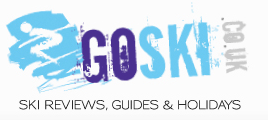Top 10 Tips To Get in Shape for Skiing or Boarding

Before rushing out into the snow, why not read our top ten tips to get in shape for skiing and snowboarding. Whilst not seemingly much fun - they are essential to consider to ensure you don't do yourself an injury or pull a muscle.
Being fit for skiing will help improve your overall performance, your ability to ski/snowboard proficiently will increase and of course you are less likely to get injuries.
Ideally our top ten tips to get in shape for skiing are for pre-season workouts - not for trying the week before. If you leave it that late - you are likely to injure yourself doing the exercises themselves! So sit back, take a read through th following, then either tackle them yourself or for an easier way to workout, find a partner or personal trainer to help.
Top ten tips to get in shape for skiing :
- Cardio - aeorbic training
Biking & mountain biking. A great aerobic exercise that also works your leg muscles. You can also use as a warm-up for other exercises. For warm-up do about 5 mins at 50-60% effort. For indoor training, then intersperse 30 second sprints at 90% effort with 1 - 2 minute rests for a period of 15-20 minutes. Finish with a simple 5 minute warm-down.
- Leg strength
Single leg squats are always good for this. Stand on one leg (using other for balance) and then squat to where thigh is parallel, then up. Repeat 10 times as a beginner and then do 3 sets - you can also alternate legs as a beginner to give a longer recovery. As you start to find this easy, try introducing a hand held weight, or increasing repititions to failure.
- Leg strength
A very simple exercise but very effective, is walking backwards up a hill or upstairs in a half-squat position. The most important parts of the exercises are to ensure your toes contact the ground first and you step off your heel, whilst mainting the squat position as much as you can.
- Agility
Key to being a really good skier, you can improve your agility and leg strength by underatking lateral exercises. Standing in a half-squat position, simply step out to one side and back, then the oposite side and repeat for 10 full sets of both sides for beginners. Increase to time as you get more used to it. As you also get more experienced, you can try jumping from side to side making sure your inner foot if off the ground and you focus your weight to your outer foot / inside edge.
- Flexibility
Very important for mogul skiing as well as other general skiing, helps prevents bad posture from muscle tiredness. Standing rotations are perfect and simple to perform too. Stand with knees slightly bent and legs comfortably apart, slowly turn your head to look over one shoulder and allow your body to to follow until you feel a good stretch throughout your back and then hold for 5 seconds. Then repeat in the other direction. Do this 15 times.
- Flexibility - legs
You can increase flexibility in your hamstrings by stretching carefully. Place your foot on a step or kerb, then with your hips facing forward and your back straight bending from your hips keeping your leg straight (not locked) slowly lean forward until you feel a stretch at the back of your thigh. If you hold this for 15 seconds and then repeat 5 times for each leg.
- Leg Power - plyometrics
Plyometrics is a type of exercise training designed to produce fast, powerful movements and promote power gain in the muscles. In essence you exerise a muscle to a state of stretch followed immediately by an explosive move that contracts the same muscle. For example the clap press-up for the chest. For the legs, the "Stadium Hop" is perfect.
Standing in semi-squat position at the foot of some steps, place your hands on your head. Jump with two feet to the first step, then again until you have done 10-12 steps. Make sure you land around the half-squat position, and make sure there are no rests until all 10-12 are complete. As a beginner do 3 sets, with a 1 min rest between. Progress up to 5 or 6 sets as you get stronger.
- Leg power
Ski jumps help the body to get used to the action of the muscles during skiing and is essentially a plyometric exercise building leg strength. Stand with feet shoulder width apart, squat in to a ski jumping position and jump straight up into the air. When you land, return to the start position straight away. Then jump into the air again. Repeat for upto 10 jumps as a beginner and increase. Try to achieve 4 or 5 sets of 10 or more.
- Speed
Whilst at the stadium, if you have enough energy left, running up and down is perfect especially if you drive your knees in the air on the way up the steps. Then run down the steps - being very careful not to jar the knees. Start with one full set of steps (30+) at maximum speed, then increase as you get fitter up to 5 or 10 sets.
- Balance
Maintaining good balance is essential for skiers. Whilst working on strength is good for stamina, your balance is key to good skiing and less injuries. Try standing on one leg with your knee slightly bent with your arms tight to your sides. Balance on this leg for upto 30 seconds, then sit down 10degrees and repeat. Repeat with increasing knee bend and then introduce closing your eyes to make more difficult again.
Whatever you do pre-season has a big influence on your ski season. By getting into the swing of things with the righ texercises, you can last longer on the piste, have sharper responses and be able to try new things in the knowledge that your body is in good shape. It may also help to prevent common injuries - especially thos at lower speeds.
So enjoy and have fun!

 France
France Andorra
Andorra Czech Republic
Czech Republic New Zealand
New Zealand Sweden
Sweden Austria
Austria Bulgaria
Bulgaria Finland
Finland Norway
Norway Switzerland
Switzerland Italy
Italy Canada
Canada Japan
Japan Spain
Spain USA
USA










